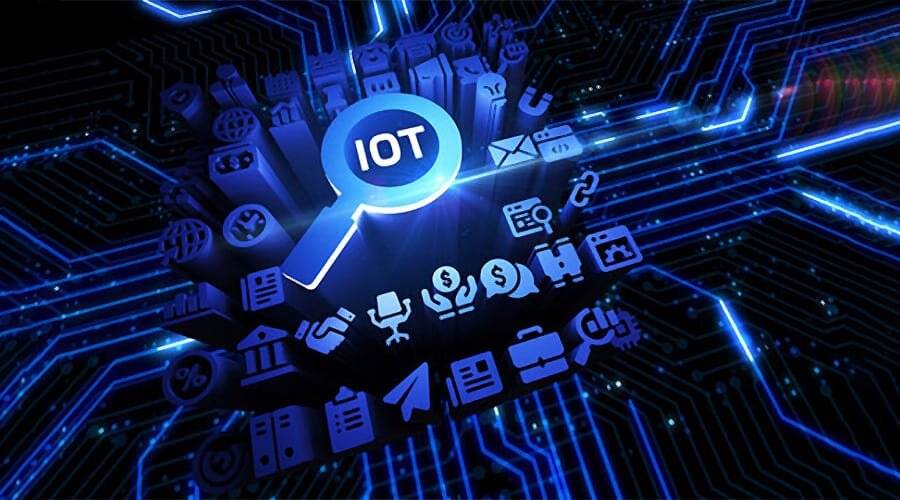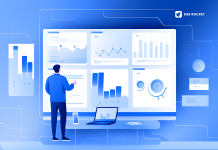What is the Future of Internet of Things IoT?
The Internet of Things (IoT) comprises several devices connected to the internet. These devices share data back and forth. IoT devices include objects apart from computers, laptops, and smartphones, which are equipped with chips for obtaining and communicating data over a particular network.
Today, there is a wide range of IoT devices that exist and enjoy the potential to exist. Often, consumers make use of their smartphones for interacting with IoT devices, such as smart speakers and home thermostats. With such connected devices, convenience is optimal, as IoT applications can assist in creating a grocery list and even assist with savings, such as when heat is turned down at home while on vacation. They can engage in the form of computer learning that helps them obtain, as well as recall data, enabling them to tune personal preferences.
How IoT Trends May Come up over the next decade
Seeing various data from a host of providers, a robust idea of IoT trends is required, along with the knowledge of what the market may look like over the next few years. When it comes to IoT software development, here are 8 predictions associated with its future.
- According to predictions, by 2025, the overall installed base of Internet of Things (IoT) connected devices will make up about 30.9 billion units on a global scale.
- Moreover, by the same year, the total global economic value of IoT technology could make up about $6.2 trillion (Business Insider)
- By 2027, it is also expected that the IoT market will be valued at over $2.4 trillion each year.
- In the next two years, most of the automobiles (70%) Will Be linked to the Internet
- Companies are expected to put in approximately $1.1 trillion in the IoT market
- It is also expected that by 2024, the Global IoT Healthcare Market will touch $140 Billion
- More than 60 % of cities based in the US are currently making investments in Smart City IoT technology
- More than 80 % of Industrial Manufacturing companies are either already leveraging or planning to leverage IoT devices.
5 IoT trends for disrupting everyday life
Similar to each aspect of our lives, the coronavirus pandemic has undeniably impacted this trend’s development. We live in a world where contact between human beings is quite minimal today, and we can remain connected through interaction between devices, tools, and gadgets.
Remote work and education
Responding to the COVID-19 pandemic, several entities needed to change their strategies and accelerate efforts underlying their digital transformation to function in line with the latest regulations mandating remote working.
Assets that were previously unconnected are now linked to allow remote operations, as well as continuous service of customers. The expectations are in line with the idea that there will be continued growth when it comes to the adoption of IoT-based technology for use cases associated with remote monitoring of equipment and assets.
Both 5G and IoT technologies can assist in enabling novel experiences in both education and training, such as virtual field trips and interactive whiteboard.
IoT can also track if homework was completed, and data can be collected regarding the amount of time taken by a student to complete it. With this data, teachers can better understand if their methods are functional, the students who require additional help, and the tasks that they struggle with. With IoT, schools can augment their campus safety, track their key resources, and augment informational access within the learning environment. Moreover, teachers can make use of this technology for the creation of “smart lesson plans,” as opposed to the conventional stoic plans.
Smart environments
Smart city solutions, including smart parking, noise mapping, smart lighting control, etc., are also extremely effective options. Such applications are under development. However, it is impossible to prevent their implementation as there are huge prospects for public safety, monitoring of air pollution, and city traffic optimization, specifically in metropolitan areas. Thus, the Smart City IoT applications are an extremely fast-growing industry.
With IoT applications, Intelligent Buildings and Home systems can be regulated: facility-automation and monitoring for building systems (HVAC, lighting, elevators, smoke alarms, fire extinguishers), utilization of building, and security (use of room, access, surveillance). With this, rational usage of resources and valuable resources are saved for the future.
Health care digitization
Right from telemedicine to automated home assistance for the elderly, as well as disabled, smart wearables, sensors, and connected devices will focus on transforming how healthcare services are provided. Moreover, it will help mitigate contact that is avoidable in scenarios with a high risk of viral contamination, like care homes and infectious disease wards in hospitals. With IoT devices, it is possible to offer general assistance, as well as advice during physical training and obtain data regarding your condition and communicate it to your doctor.
With IoT, healthcare facilities will become smart buildings and help generate revenue while decreasing costs.
Industrial Internet of Things (IIoT)
Companies that managed to adopt IIoT technologies already began to enjoy the benefits following the onset of the pandemic, which resulted in the lockdown of several businesses or an alteration in working practices to facilitate remote working and social distancing.
The ones enjoying optimal benefits are spheres of manufacturing, supply chain management, and logistics. In these areas, IIoT applications can assist with inventory tracking and real-time yields, downtime monitoring, prediction of maintenance issues before their occurrence. This has made remote working possible, as people are required to come on-premises only to solve any issues that emerge.
Connectivity options such as 5G blossom
This specific technology ensures better connectivity for IoT devices in remote locations along with better speeds, thereby augmenting both the reach and functionality of IoT-enabled devices in the fields of manufacturing, agriculture, connected devices, healthcare, and more.
There are several predicted improvements of 5G, such as decreased response time, improved data transfer, and better network reliability.












